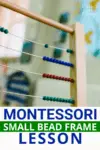I earn commissions from my affiliated links. Please see my disclosure policy for more details.
The Montessori Math Small Bead Frame is often neglected in Early Childhood classrooms. The frame comes at the end of the Place Value and Decimal System lessons, and, as noted by Dr. Montessori, marks the entrance into abstraction.
Many classrooms do not get to the lesson for one reason or another. The lesson is meant for older children (5 1/2 and up) so that explains the dust a bit.

Montessori Small Bead Frame
Additionally, like my son’s teacher, some teachers find the bead frame confusing to children. I personally really like the Small Bead Frame. The colors remind us of the place values, and I appreciate how children need to move their fingers as they are thinking, counting, and performing math operations.
I particularly find the exchanging portion of the lesson effective with truly ingraining the concepts of place value into children’s minds.
The goal of the lesson is to reinforce lessons a child has had on the four operations, bring more clarity to the ideas of place value, and show the relationship between those values in the decimal system.
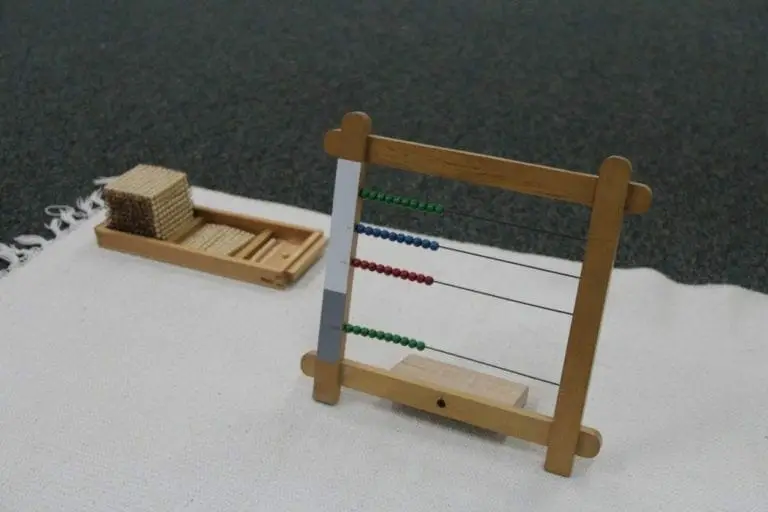
Presentation I: Introduction to the Small Bead Frame
Invite the child to learn how to use the bead frame. Gather the small bead frame and the presentation tray of the golden beads.
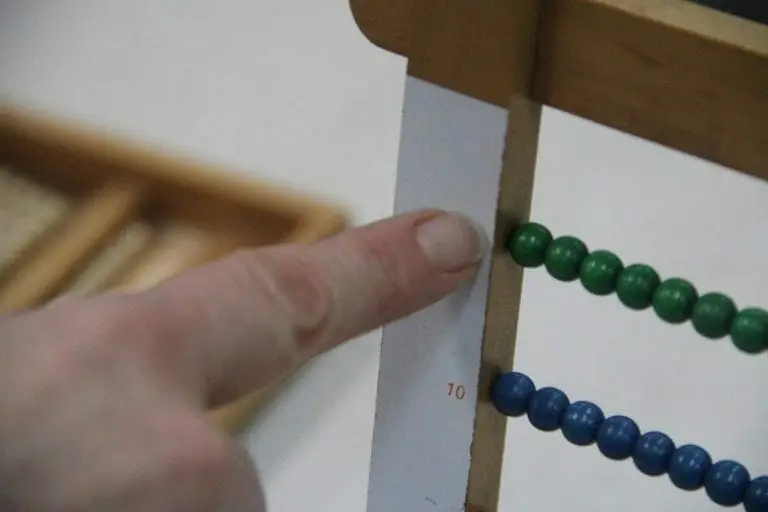
“The top row represents units. Will you take the unit from the presentation tray?” Point out the 1 on the top left of the frame.

Count the beads as you slide them to the right. Use your right index finger. Encourage the child to count the beads with you.
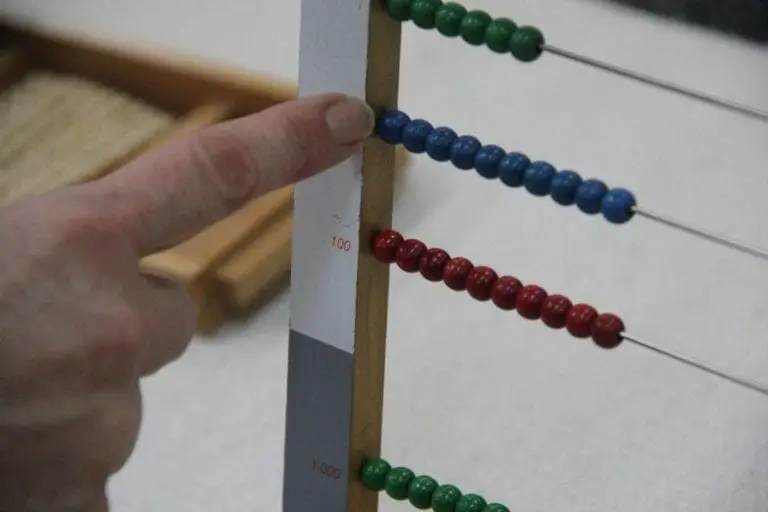
Point to the second row: “What do you think these stand for?”
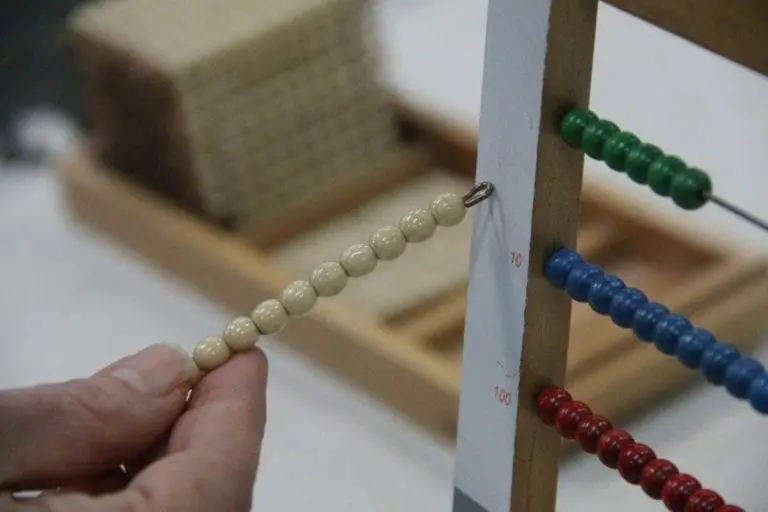
Ask the child to retrieve a ten bar from the presentation tray.
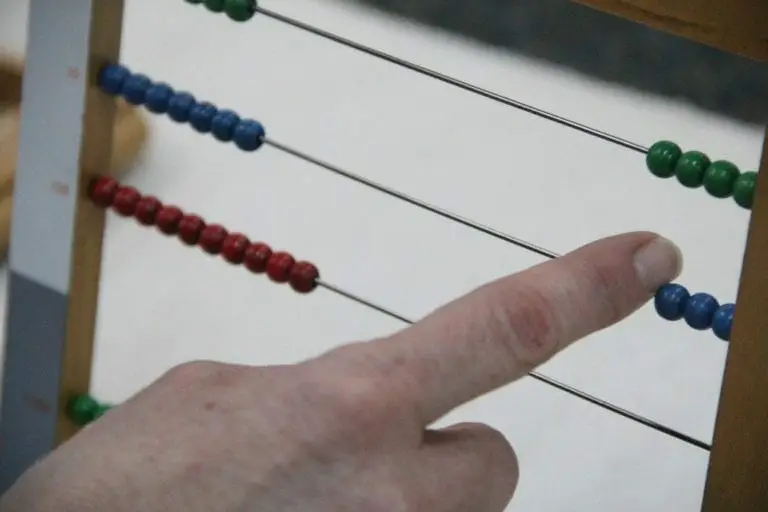
Count the tens one by one. Say “ten, twenty, thirty…” or “one bar, two bars, three bars…” Proceed with the hundred row.
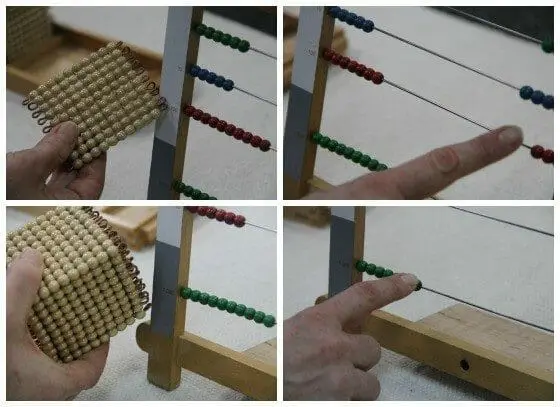
Ask the child to retrieve the hundred square from the presentation tray.
Count “one hundred, two hundred, three hundred…”
Continue with the thousand cube.

Name a quantity of units and ask the child to form it on the bead frame. Continue with tens, hundreds, and thousands. Include numerals with zeros.
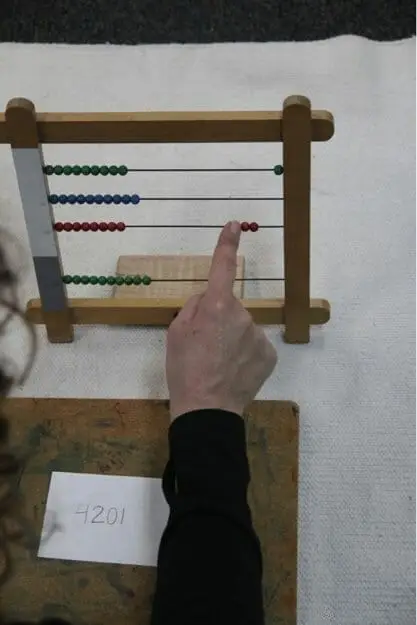
You can also use strips of paper to write a numeral and have the child use the bead frame to represent the numeral.
Do you use the small bead frame in your Montessori math lessons?

